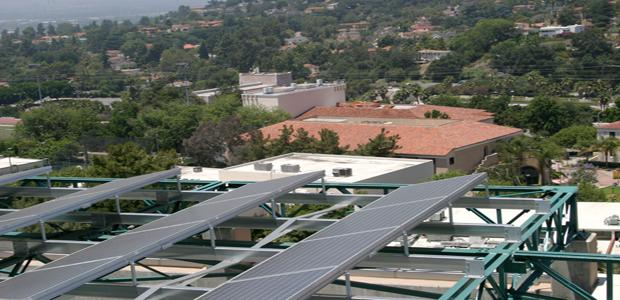GCC is renovating its infrastructure and at the same time saving energy with the new Energy Conservation and Modernization project.
“The annual college’s power bill is about $1.4 million,” said Nelson Oliveira, director of facilities for GCC.
The motion of the Energy Conservation and Modernization project has already started. The board of trustees had approved and the college received funds from different sources to make this project work.
The energy conservation project was launched last year when McKinstry, a design/build construction and engineering and facilities management firm, conducted an energy audit. Electricians went through all the GCC buildings, checking equipment that consume energy.
McKinstry engineers have produced an engineering report which identifies the opportunities for savings. The list of upgrade projects, such as replacing air conditioning equipment and lighting with more efficient equipment, was approved by Oliveira.
GCC has two main existing chiller plants, the air conditioning system that serves the whole campus. Therefore, the project was divided into two phases.
Phase I: The central plan air conditioning equipment, considered an opportunity for quick payback, is designed for the newer buildings. This will quickly reduce energy costs.
The air conditioning will begin in the foundation. This area of the new building will need to be working correctly before the construction of the upper layers of new building begins. One of the current chiller stations is located behind the auditorium, and the second one is near the Health & Science building.
Now that the audit is finished, the project is now in the engineering phase. Mckinstry is working on the design for the new project.
“We are designing a new air conditioning system for the library, new control systems for buildings like Advanced Technology, Aviation and Arts,” said Adam Raftery, project manager and representative from Mckinstry.
Phase II: Solar panels are already in place and functioning on top of the Glendale Community College’s parking structure. Currently solar systems engineers are simulating how much money the college would be able to save with more solar panels.
The Board of Trustees has approved $2.3 million dollars for the project.
The budget for the Phase I comes from: Measure G, local funding of GCC, and from the state by Proposition 39, a corporate tax adjustment approved by California voters last year.
GCC also received rebates on what had already been paid or contributed, from Glendale Water and Power and Southern California Gas Company, as well as on-billing financing from SoCalGas with zero percent financing for 10 years.
The completion of Phase II of this project will require an additional $2 million.
“We want to have all these expenses paid by our savings,” Oliveira said.
The focus of this project is to make the campus more energy efficient, which will result in six-figure annual savings to GCC’s general fund.
“We are predicting to save about $200,000 on annual energy savings and get this $1.4 million dollar bill to something smaller,” Raftery said.
The Energy Conservation and Modernization project also includes lighting, power-delivery upgrades and temperature control.
The upgrades, Oliveira added, will help the college to avoid situations like the two power outages that occurred on campus on Nov. 30 and Dec. 5 of 2012.
“When you save energy, you have less expense and it always converts into improving the infrastructure of the college, and a better learning environment,” he said.


